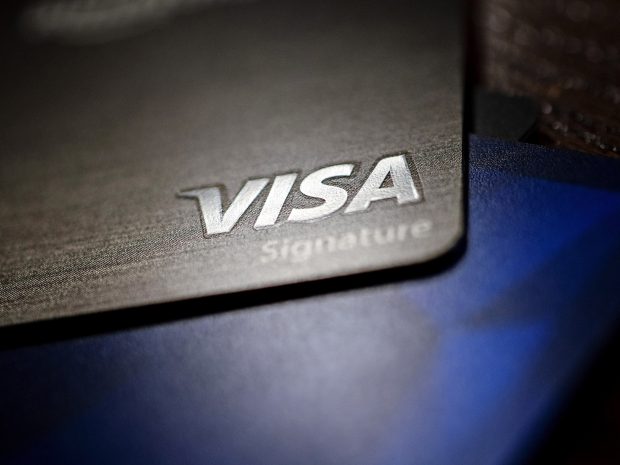 Photographer: Daniel Acker/Bloomberg
Photographer: Daniel Acker/Bloomberg
Cardholder spending on Visa Inc. and Mastercard Inc. networks didn't hold up as well as analysts predicted during the last three months of 2018 amid the U.S. government shutdown, President Donald Trump's burgeoning trade war and a strengthening U.S. dollar.
Customers spent $2.2 trillion on Visa's network in the company's fiscal first quarter, below the $2.27 trillion analysts at Sandler O'Neill & Partners anticipated. At Mastercard, spending on the firm's network rose 14% to $1.55 trillion, just below the $1.56 trillion that Sandler O'Neill analysts predicted.
Recommended For You
Visa warned consumer spending could be crimped in the first three months of the year during a conference call with analysts on Wednesday. It pointed to the prospect of another government shutdown, a looming U.S. deadline to reach a trade deal with China and the U.K's planned exit from the European Union.
A stronger U.S. dollar also hinders the payment network's profits abroad and it crimps overseas spending. The dollar strengthened for a third quarter, the longest such stretch since 2015, according to data compiled by Bloomberg.
"Some caution is called for, given the many unresolved issues that are coming to a head" in Visa's fiscal second quarter, Chief Financial Officer Vasant Prabhu said on the call. "There could be some volatility as we navigate through these complex issues and the uncertainty they create for businesses and consumers."
Visa said cross-border spending climbed 3% in the three months through December, the smallest uptick in at least five quarters. Prabhu said spending in the U.S. by consumers from outside the country has declined.
Mastercard said Thursday it now expects adjusted revenue to grow by a percentage in the "low teens" this year, while adjusted expenses will climb by a percentage in the "high end of high single digits." Visa said it still expects revenue to grow by a percentage in the "low double" digits, while expenses should drop by a percentage in the "mid-single" digits. Its board authorized a new $8.5 billion share-buyback program.
Visa spent $1.46 billion on client incentives paid to banks and retailers to encourage spending on its network, while Mastercard's spending on such rebates climbed 15% to $1.97 billion. Visa still expects incentives to be about 22% to 23% of revenue this year, the firm said.
Mastercard is positioned for mid-teens EPS growth in the long term, driven by the shift toward electronic transactions and the expansion of noncard payments among businesses, governments and consumers.– David Ritter, Senior Industry Analyst, Bloomberg Intelligence.
Mastercard for the first time also warned investors that "the impact of global economic and political events and conditions" could hinder its results, whether it be "global financial market activity, declines in cross-border activity, negative trends in consumer spending, the effect of adverse currency fluctuation and the effects of the U.K.'s proposed withdrawal from the E.U."
© 2025 ALM Global, LLC, All Rights Reserved. Request academic re-use from www.copyright.com. All other uses, submit a request to [email protected]. For more information visit Asset & Logo Licensing.






